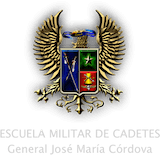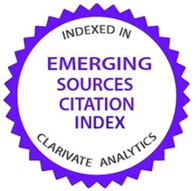La discusión sobre la relación entre antinarcóticos y contrainsurgencia: ideas para la construcción de un marco teórico diferente
DOI:
https://doi.org/10.21830/19006586.226Palabras clave:
insurgencia, contrainsurgencia, drogas, antinarcoticos, redes, criminalidad, terrorismoResumen
El presente articulo discute la relación entre antinarcóticos y contrainsurgencia. Como lo han explicado varios criminólogos, las insurgencias pueden experimentar procesos de transformación cuando establecen conexiones con organizaciones criminales o a medida que desarrollan actividades criminales por si mismas. El caso de los narcóticos es un ejemplo claro. Los estados han confrontado dicho tipo de insurgencias a través de una combinación de instrumentos de antinarcóticos y contrainsurgencia, pero de acuerdo a algunos académicos, estos no solo son opuestos sino que el primero es contraproducente para el segundo. Este artículo explica como estos dos conceptos, de hecho, son interdependientes y se necesitan mutuamente. Al final, se propone la base, y solo la base, para un marco teórico sobre la relación entre contrainsurgencia y antinarcóticos, sin discutir los detalles que constituirían un paradigma.
Descargas
Referencias bibliográficas
Arquilla, J. & Ronfeldt, D. (2001). Networks and Netwar: The future of Terror, Crime and Militancy Santa Monica: RAND.
PMid:11710634
Benbow, T. & Thornton, R. (2008). Dimensions of Counterinsurgency: Applying Experience to Practice Oxon: Routledge.
Berkowitz, B. (2003). The New Face of War, How War Will Be Fought In the 21st Century. New York: The Free Press
Bousquet, A. (2009). The Scientific Way of Warfare. New York: Columbia University Press
Bunker, B. (2005). Networks, Terrorism and Global Insurgency. London: Routledge.
Cassidy, R. (2005). The British Army and Counterinsurgency: The Salience of Military Culture. Military Review. May-June.
Castells, M. (1998). End of Millenium Oxford: Blackwell Publishing.
Chamberlain, R. (2008). With Friends Like This: Grievance, Governance and Capacity Building in COIN. Parameters (38) 2.
Coker, C. (2009). War in an age of risk. Cambridge: Polity.
Dishman, C. (2001). Terrorism, Crime and Transformation. Studies in Conflict and Terrorism (24)
https://doi.org/10.1080/10576100118878
Duyvenstein, I. & Jan Angstrom. (2005). Rethinking the nature of war. Oxon, UK: Frank Cass.
Ehrenfeld, R. (1990). Narcoterrorism. New York: Basic Books.
Felbab-Brown, V. (2010). Shooting Up, Counterinsurgency and the War on Drugs. Washington: Brookings Institution Press.
Freedman, L. (2008). War Evolves into a Fourth Generation, a commentary on Hammes. In Terrif, T. Karp, A. & Kamp, R. Global Insurgency and the Future of Armed Conflict. London: Routledge.
Galula, D. (1964). Counterinsurgency Warfare, Theory and Practice London: Pall Mall Press
PMid:14168724
Gumz, J. (2009). Reframing the Historical Problematic of Insurgency: How the Professional Military Literature Created a New Story and Missed the Past. Journal of Strategic Studies. (32) 4.
https://doi.org/10.1080/01402390902986972
Hoffman, B. (1998). Inside terrorism. New York: Columbia University Press.
Hoffman, B. & Taw, J. (1991). Defense Policy and Low Intensity Conflict, the development of Britain's Small Wars Doctrine During the 1950's. Santa Monica, California: RAND.
Kilcullen, D. (2005). Countering Global Insurgency The Journal of Strategic Studies (28)4.
https://doi.org/10.1080/01402390500300956
Kilcullen, D. (2009). The Accidental Guerrilla Oxford: Oxford University Press.
PMid:19579115
Kitson, F. (1971). Low Intensity Operations. London: Faber and Faber.
Laqueur, W. (1977). The Guerrilla Reader: A Historical Anthology. New York: New American Library.
Mackinlay, J. (2001). The Insurgent Archipelago: From Mao to Bin Laden. London: Hurst and Company.
PMid:11370975
Maines, D. (2008). Counterinsurgency in the Real World. Parameters (38) 4.
Makarenko, T. (2004). The Crime Terror Continuum: Tracing the interplay Between Transnational Organized Crime and Terrorism. Global Crime (16) 1.
https://doi.org/10.1080/1744057042000297025
Marston, D. & Malkasian C. (2008). Counterinsurgency in Modern Warfare New York: Osprey Publishing.
Metz, S. (1995). A Flame Kept Burning: Counterinsurgency Support after the Cold War. Parameters (Autumn).
Paget, J. (1967). Counterinsurgency Campaigning. London: Faber and Faber.
Schmitt, C. (1963). The Theory of the Partisan, a Commentary/Remark on the Concept of the Political. Berlin: Dunker and Huboldt.
Shafer, M. (1988). The Unlearned Lessons of COIN. Political Science Quarterly (103) 1.
Shelley, L. (2002). The Nexus of Organized International Criminals and Terrorism. International Annals of Criminology (1) 2.
Shelley, L. (2005). Methods and Motives: Exploring links between Transnational Organized Crime. Trends in Organized Crime (9) 2.
Shelley, L. & Picarelly, J. (2005). Methods not Motives: Implications of the Convergence of International Organized Crime and Terrorism. Policy Practice and Research (3) 4.
Sloan, E. (2002). The Revolution in Military Affairs. Quebec: McGill – Queens University Press.
Slump, G. (2005). The Theory of the Partisan: Carl Schmitt’s Neglected Legacy. History of Political Thought (25) 3.
Smith, M.L.R. Guerrillas in the Midst: Reassessing Strategy and Low Intensity Warfare. In Review of International Studies. (29) 1. p. 19-37
Sullivan, J. (2005). Terrorism, Crime and Private Armies. In Bunker, R. Networks, Terrorism and Global Insurgency. London: Routledge.
United Kingdom Chiefs of Staff. (2001). Joint Warfare Publication 0-01 British Defense Doctrine. Swindon, UK: The Joint Doctrine and Concepts Centre, Ministry of Defense.
United States, the Army Field Manual 3-20/ Marine Corps Warfighting Publication 3-33.
Wardlaw, G. (1988). Linkages Between the Illegal Drug Traffic and Terrorism. Conflict Quarterly (8)3.
Wenger, M. (1983). AirLand Battle Doctrine MERIP Reports. (111).
https://doi.org/10.2307/3011018
Williams, P. (2008). Terrorist Financing and Organized Crime: Nexus, appropriation or transformation?. In Bersteker, T. & Eckert, S. Countering the Financing of Terrorism London: Routledge.
Wolf, C. (1985). Insurgencies and Counterinsurgency: New Myths and Old Realities, Document No. P-3132-1. Santa Monica, CA: Rand Corporation.
Descargas
Publicado
Cómo citar
Número
Sección
| Estadísticas de artículo | |
|---|---|
| Vistas de resúmenes | |
| Vistas de PDF | |
| Descargas de PDF | |
| Vistas de HTML | |
| Otras vistas | |

























